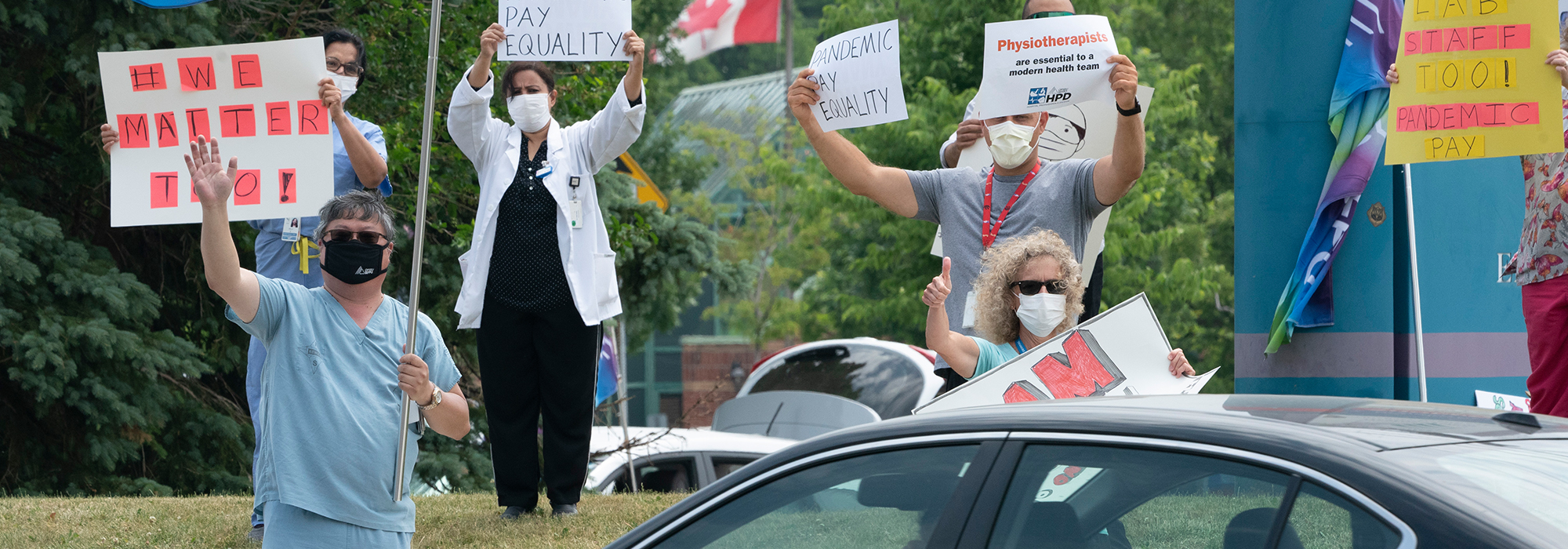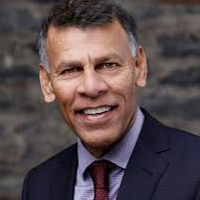
It is of the utmost importance that the lessons we have learned throughout this pandemic help us shape a brighter future for people living in Canada. This crisis has shone a light on some of the vast inequalities in this country. As we move towards recovery, it’s clear we have to strengthen the social safety net and disaster-proof our nation.
COVID-19 has exposed and exacerbated an unequal labour market and recovery gives us the opportunity to address those inequities. The hardest hit in this pandemic have been those who had been struggling even before COVID-19, and who had no cushion when it hit. At the peak of the lockdown, 5.5 million people felt the impact on the economy – more than three-million people lost their jobs, and 2.5 million had their hours reduced.
Negative impacts rooted in existing inequities
The workers most affected by job losses were also those at the highest risk of infection: women, racialized Canadians, immigrants, refugees and migrant workers. As well, women face a disproportionate burden during this pandemic, as they do a majority of the unpaid care work for older relatives and children who are aren’t going to school.
As Canada’s unions marked the World Day for Decent Work at the beginning of October, we recognized the frontline workers who have put their own health at risk, and those who have borne the brunt of the negative impact of the pandemic itself.
The fact that these workers were the hardest hit from both a health and economic standpoint is not a coincidence. While causes of inequity are complex, they are often rooted in social and structural inequities, including systemic racism.
Canada’s unions have been calling on Statistics Canada to start collecting and publishing data on race in its monthly Labour Force Survey for decades. It took a pandemic to finally highlight the need for this change. Monthly labour force data by race and ethnicity was published for the first time last July.
The data confirmed what racialized and immigrant workers experience every day: higher unemployment and lower wages.
Racialized, immigrant and women workers are over-represented in critical work, which tends to be low paying and undervalued. Nearly one-quarter of Filipino and one-fifth of Black Canadians work in health care and social services, putting them at higher risk of exposure to COVID-19 and these same workers face a significant wage gap.
According to the July report, workers in these industries who are not racialized earned an average of $29.90 per hour, while Filipino and Black workers earned between $26.86 and $23.36. The pay gap is larger for those with overlapping identities, with a racialized woman earning less than a racialized man. Racialized and migrant workers are also over-represented in occupations that take place in settings where social distancing is more difficult, like factories or meat-packing plants.
Effective measures to fight inequality
This crisis has led to a real appreciation for many of these workers who were suddenly deemed critical. We now have an opportunity to finally do right by them and implement effective measures to fight inequality.
Firstly, we need to ensure that the minimum wage in each province is a living wage. The federal government should create a federal minimum wage and work with the provinces to raise provincial minimums. At the same time, all workers must be given access to paid sick days. Without paid sick leave, workers will not be able to isolate for fear of losing their income.
The federal government took an important step in giving workers access to 10 paid days of sick leave through the Canada Recovery Sickness Benefit (CRSB), but the provinces need to step up and create their own paid sick days.
Of course, one of the best ways to improve working conditions and combat inequities like pay gaps is to give workers a voice in the workplace through unionization. Since the beginning of the pandemic, there has been a growing number of workers who have reached out to unions or who have started organizing in their workplace.
While many workers have been facing down the toughest challenges of their lives during this pandemic, this crisis has also empowered workers to speak up and stand up for their rights. People are seeing the value of collective action and a collective voice.
The reality, though, is that the labour laws that set rules for forming and joining unions have not kept pace with the changing workplace. Companies and employers have also found new ways and gotten better at skirting them. It is estimated that 8.2 percent of employed Canadians now work in the gig economy. These workers are more likely to be women and more likely to be newcomers to Canada.
Under current laws, workers face major hurdles when trying to unionize, especially those in non-standard work, like gig-workers, freelancers or contract workers. In some provinces, agricultural and domestic workers, whom are disproportionately migrants and racialized, are still excluded from core labour codes.
We need updated labour laws that reflect the realities of the 21st century, and this includes ensuring that no worker is excluded from their fundamental right to organize and bargain collectively.
Furthermore, the temporary measures put in place to grant gig-workers and other non-standard workers access to EI should be made permanent.
The work of low-wage, low-skill temporary migrant workers also made headlines during this crisis. These workers do critical labour in the supply chain but have very few options in terms of becoming permanent residents or citizens in Canada.
In addition, we must recognize that many of the people who were laid off during the pandemic will not see their jobs return. Job creation, including job training, are key.
We can be strategic in planning and use this opportunity to invest in social, physical and green infrastructure. This plan would create decent, unionized jobs in health and long-term care, universal child care, renewable energy, public transit, and in other sectors that support our transition to a green and just economy.
Canada’s unions are advocating for the creation of better jobs to replace the ones we’ve lost; stronger public health care that includes pharmacare, mental health care and long-term care; and a robust social safety net that will withstand the next crisis.
While we focus on rebuilding the economy we have the opportunity to make the lives of workers better. We need to ensure that human rights are front and centre in all the work we do, and that we bring a gender and equity lens to issues we face. We need recognition that systemic, structural and institutional barriers create, reinforce and maintain social and economic inequality for marginalized communities.
The pandemic has thrown a harsh light on life’s inequities for Black, Indigenous and people of colour, including racialized immigrants, newcomers, migrants and people with precarious immigration status. Women in particular are negatively affected.
On top of all of this, we’ve seen justified concerns and protest against systemic racism and discrimination for many groups in our society, including a troubling rise in anti-Asian racism and advocacy against anti-Black racism and other forms of oppression.
Despite all this upheaval, there is opportunity. Canada is well positioned to fix what was clearly broken in our communities and to move us forward, together.
This article is part of the Tackling inequality as part of Canada’s post-pandemic recovery special feature.










